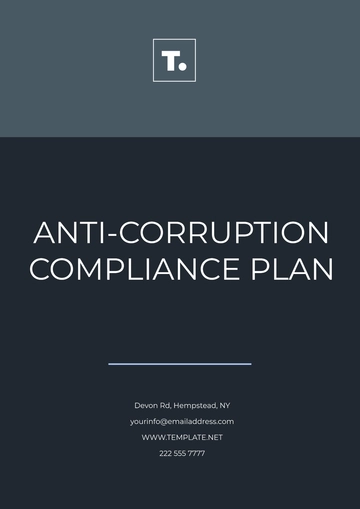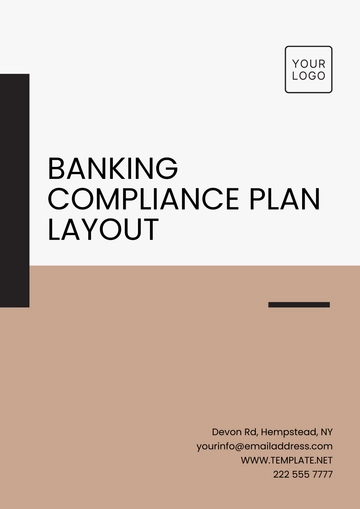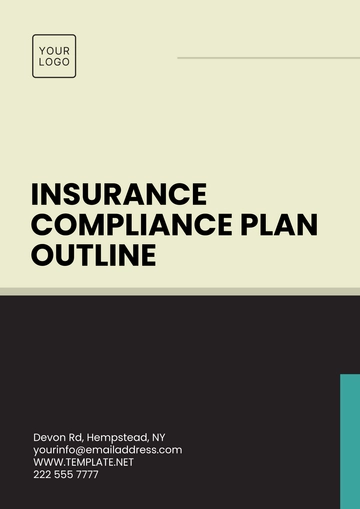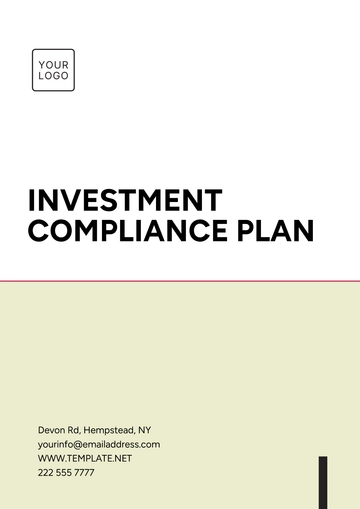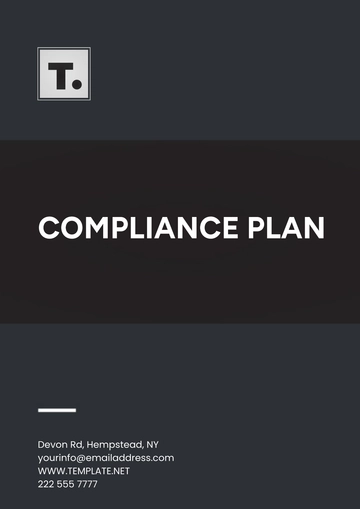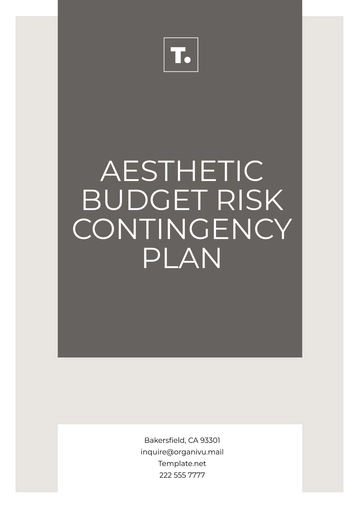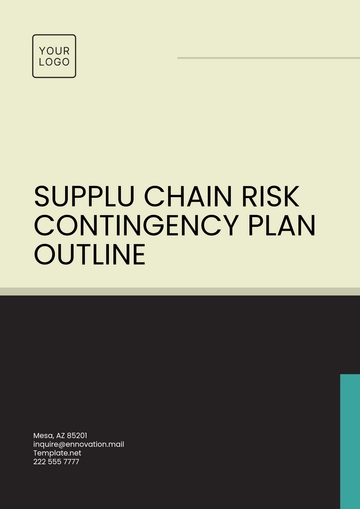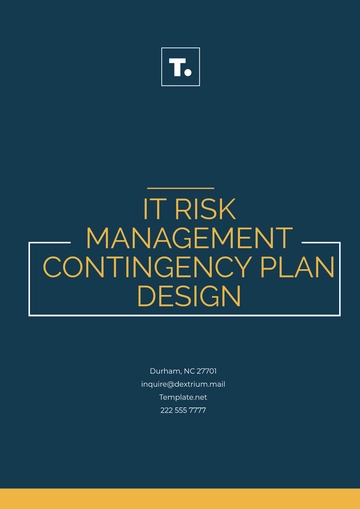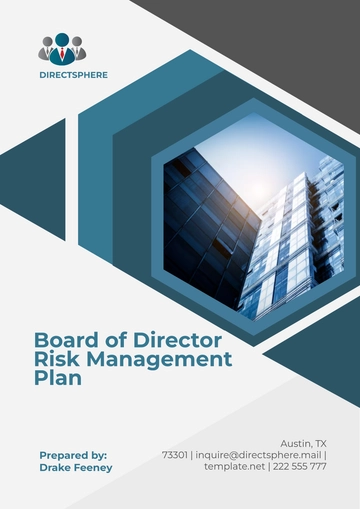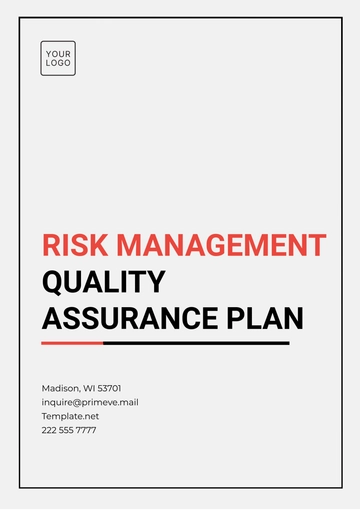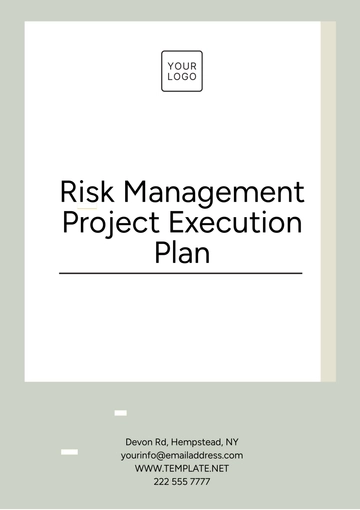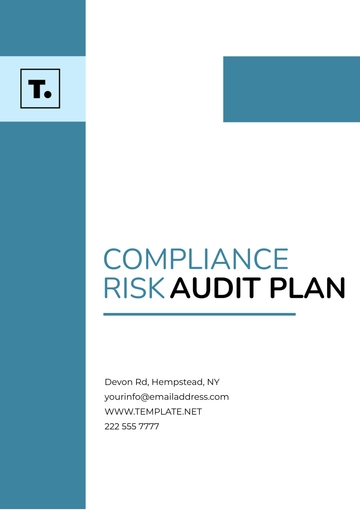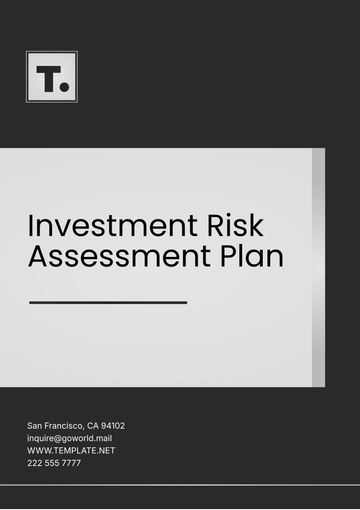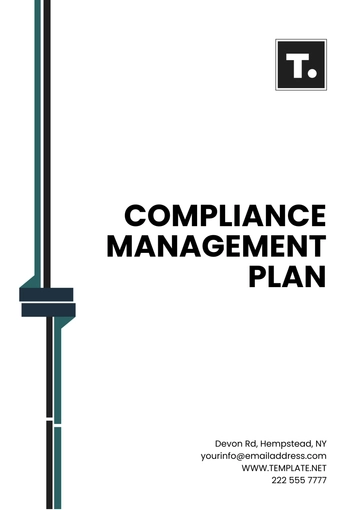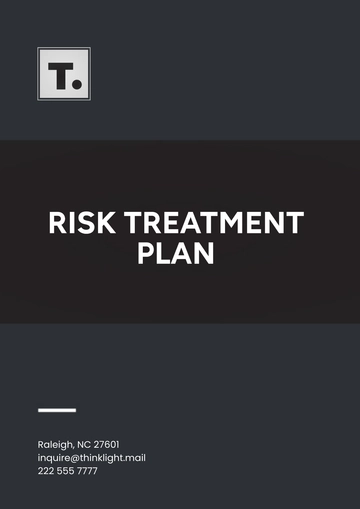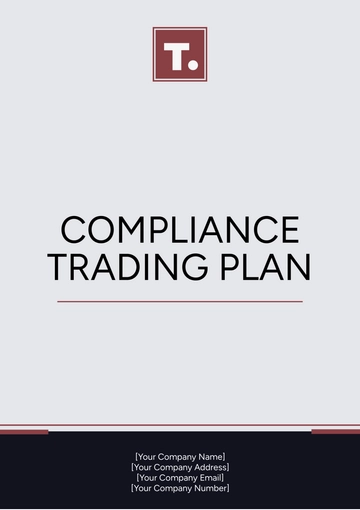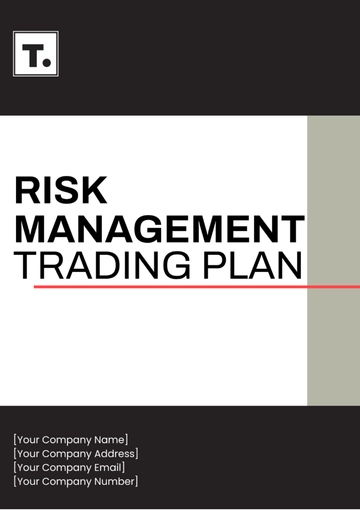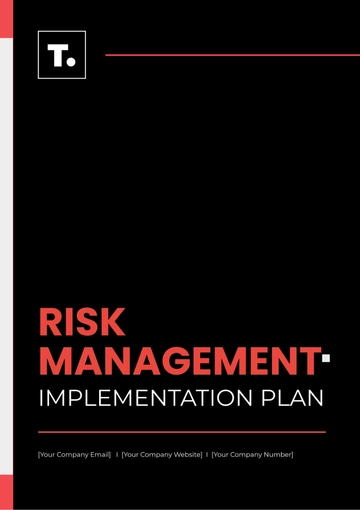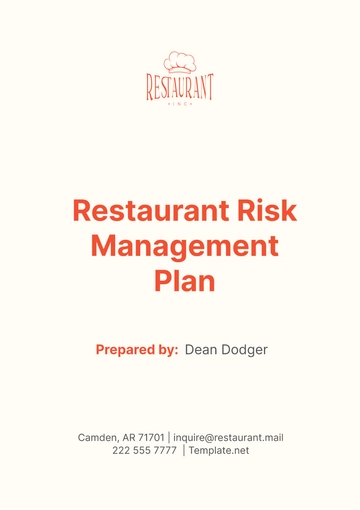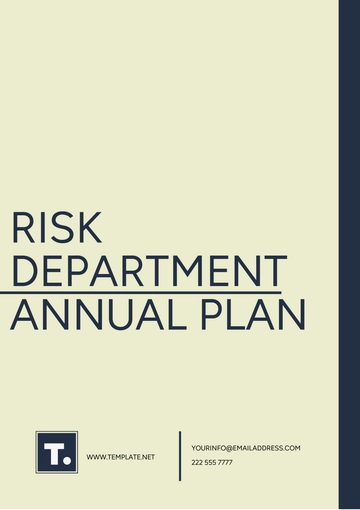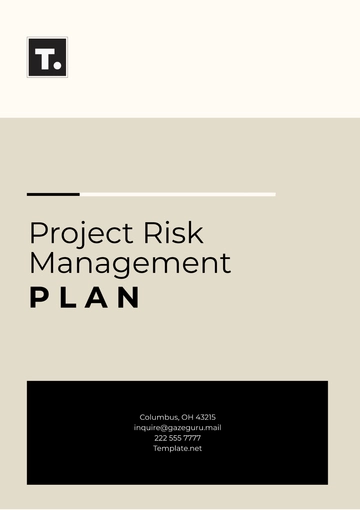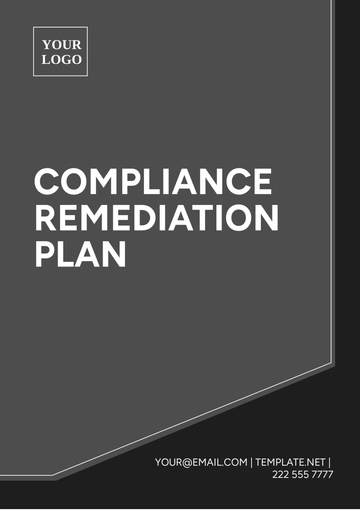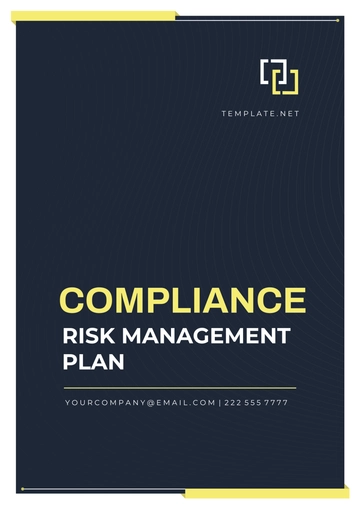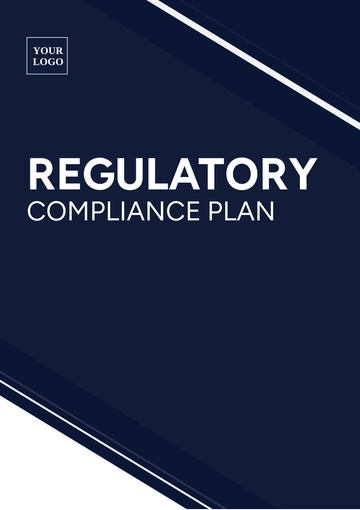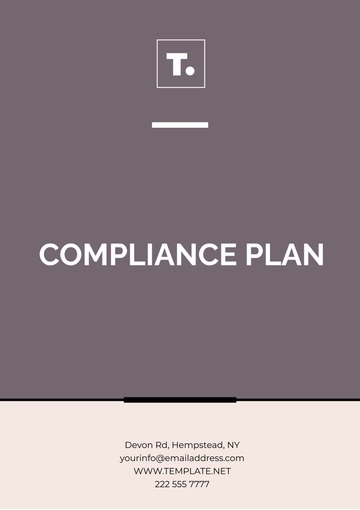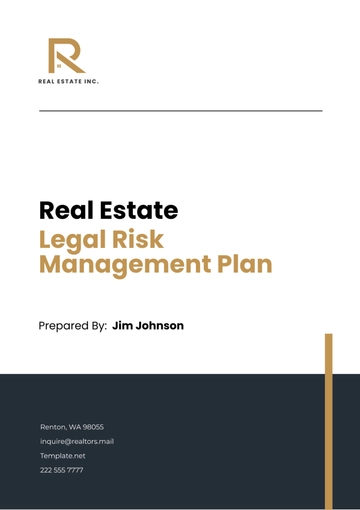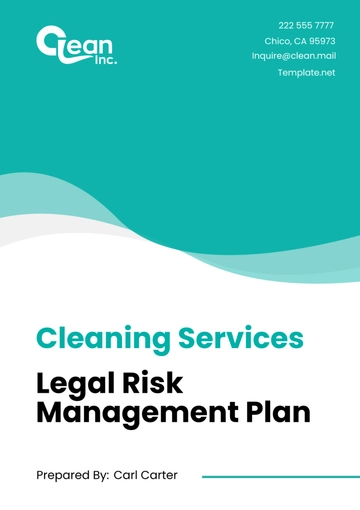Free Financial Risk Response Plan

In this Financial Risk Response Plan, we aim to comprehensively identify and categorize potential risks—market, credit, liquidity, operational, and others—assessing exposure and understanding sources for effective risk mitigation strategies.
Understanding the Organization's Financial Structure
To precisely evaluate the financial risks that an organization may be exposed to, it is imperative to initially acquire an in-depth knowledge of the financial configuration of the said organization. Participation in this comprehensive process will necessitate a meticulous examination of various financial documents and records. These incorporate but are not limited to financial reports which present a summary of financial performance over a specific period, profit and loss statements that provide detailed information about the revenues, costs, and expenses over time, balance sheets that give a snapshot of a company’s financial condition at a specific moment in time, and cash flow statements that record the organization's cash inflows and outflows. Other financial records and documents will also need to be scrutinized in the process of fully understanding the organization's financial infrastructure.
Identifying Potential Financial Risks
Following the initial step, it is imperative to pinpoint any potential financial risks that might present themselves. These risks could potentially encompass a variety of areas such as market risks, credit risks, liquidity risks, operational risks, and potentially even more. It is fundamental to the entire process of risk management that each of these risks is thoroughly understood. Developing a deep and comprehensive understanding of each risk is critical to effectively managing them.
Assessing Risks
Following the identification of potential risks that could be detrimental to the organization, a comprehensive assessment of each risk will be carried out meticulously. The objective of this in-depth risk assessment is to identify and understand the level of exposure of the organization to each type of risk. Subsequently, after each risk has been assessed, the focus will shift to the evaluation process. During this phase, the objective is to numerically measure or quantify the potential impact of each risk on the financial performance of the organization. The findings from this evaluation process will provide critical insight and enhance our understanding of the potential financial implications each identified risk may have on the organization's financial health and stability.
Analyzing Sources and Drivers of Financial Risks
A comprehensive examination will be carried out on the various sources and key driving forces behind these financial risks. This exhaustive evaluation encompasses the careful comprehension of the multitude of elements that possess the capacity to amplify or mitigate the probability of each risk coming to fruition. The identified elements span a wide array of factors that include but are not limited to, alterations in the prevailing market conditions, instances of economic instability or downturns, as well as shifts or groundbreaking advancements in the field of technology.
Monitoring and Control Measures
There should be a deliberate establishment of a sequence of control measures and monitoring systems. The implications of this call for the creation of various systems that will be tasked with reviewing and managing risks regularly. These systems will be programmed to contain trigger points, which are premeditated levels at which specific risks become too high or intolerable. Upon attainment of such threshold levels, these systems are designed to flag off the risk, removing the checked and balanced situation. This automatic warning will initiate the implementation of additional or prearranged proactive actions specifically designed to respond to such scenarios.
Establishing a Risk Mitigation Strategy
Once the risks have been properly assessed, it becomes crucial to develop a comprehensive risk mitigation strategy. This may take many forms, including avoidance of risks, taking measures to reduce risks, sharing risks among several parties, or retaining risks with the understanding and capacity to manage them. The specific strategy to be adopted would primarily depend upon the unique attributes and qualities of the risks as they have been identified.
Continual Risk Assessment
It is extremely crucial to guarantee that the process of risk assessment is executed continually and consistently. This regular assessment is of utmost importance as it plays a critical role in the identification of any new and emerging threats that may pose a risk. In addition to this, a periodic evaluation will also aid in keeping a check on the status of risks previously identified and thus, help in tracking their progress or regression.
Training and Development
One of the most significant points that needs to be taken into account is the issue of staff training and development. Within the context of executing a risk management plan, this is of utmost importance. Any risk management plan must factor in the requirement to provide comprehensive training to all staff members irrespective of their role and position in the organization. This professional training should empower them with the ability to comprehend exactly what a risk is, the method of determining and evaluating such risks, and, most importantly, the best way to respond when faced with these potential threats or risks.
Communication and Reporting
The plan that is being put into place must take into account the need for lucid and dependable methods of communication that can be used to report on the status of the risks involved. This is an important facet of the plan as it ensures that everyone who is a part of the organization is regularly updated about any critical developments that take place, along with the latest news about the risk status. Through this, organization members will remain well-informed in real-time, therefore allowing them to respond swiftly and appropriately to any risk-related issues that may arise.
Plan Review and Update
The final requirement of the plan requires periodic reviewing and updating. This is important because it ensures the plan remains effective and relevant in its design and execution. By incorporating new developments and insights garnered from continuous monitoring and assessment processes, the site's provisions for safety, security, and organization can consistently meet the needs and demands of its intended operational parameters. This ongoing process of review and modification allows for the plan's adjustment and optimization according to changes in circumstance or new information, hence preserving its applicability in the long term.
- 100% Customizable, free editor
- Access 1 Million+ Templates, photo’s & graphics
- Download or share as a template
- Click and replace photos, graphics, text, backgrounds
- Resize, crop, AI write & more
- Access advanced editor
Explore the Financial Risk Response Plan Template on Template.net—a game-changer for risk management. Crafted for versatility, it's an editable and customizable solution using an intuitive AI Editor Tool. Effortlessly identify, assess, and mitigate financial risks with precision. Elevate your strategy and resilience seamlessly. Your blueprint for financial stability starts here.
You may also like
- Finance Plan
- Construction Plan
- Sales Plan
- Development Plan
- Career Plan
- Budget Plan
- HR Plan
- Education Plan
- Transition Plan
- Work Plan
- Training Plan
- Communication Plan
- Operation Plan
- Health And Safety Plan
- Strategy Plan
- Professional Development Plan
- Advertising Plan
- Risk Management Plan
- Restaurant Plan
- School Plan
- Nursing Home Patient Care Plan
- Nursing Care Plan
- Plan Event
- Startup Plan
- Social Media Plan
- Staffing Plan
- Annual Plan
- Content Plan
- Payment Plan
- Implementation Plan
- Hotel Plan
- Workout Plan
- Accounting Plan
- Campaign Plan
- Essay Plan
- 30 60 90 Day Plan
- Research Plan
- Recruitment Plan
- 90 Day Plan
- Quarterly Plan
- Emergency Plan
- 5 Year Plan
- Gym Plan
- Personal Plan
- IT and Software Plan
- Treatment Plan
- Real Estate Plan
- Law Firm Plan
- Healthcare Plan
- Improvement Plan
- Media Plan
- 5 Year Business Plan
- Learning Plan
- Marketing Campaign Plan
- Travel Agency Plan
- Cleaning Services Plan
- Interior Design Plan
- Performance Plan
- PR Plan
- Birth Plan
- Life Plan
- SEO Plan
- Disaster Recovery Plan
- Continuity Plan
- Launch Plan
- Legal Plan
- Behavior Plan
- Performance Improvement Plan
- Salon Plan
- Security Plan
- Security Management Plan
- Employee Development Plan
- Quality Plan
- Service Improvement Plan
- Growth Plan
- Incident Response Plan
- Basketball Plan
- Emergency Action Plan
- Product Launch Plan
- Spa Plan
- Employee Training Plan
- Data Analysis Plan
- Employee Action Plan
- Territory Plan
- Audit Plan
- Classroom Plan
- Activity Plan
- Parenting Plan
- Care Plan
- Project Execution Plan
- Exercise Plan
- Internship Plan
- Software Development Plan
- Continuous Improvement Plan
- Leave Plan
- 90 Day Sales Plan
- Advertising Agency Plan
- Employee Transition Plan
- Smart Action Plan
- Workplace Safety Plan
- Behavior Change Plan
- Contingency Plan
- Continuity of Operations Plan
- Health Plan
- Quality Control Plan
- Self Plan
- Sports Development Plan
- Change Management Plan
- Ecommerce Plan
- Personal Financial Plan
- Process Improvement Plan
- 30-60-90 Day Sales Plan
- Crisis Management Plan
- Engagement Plan
- Execution Plan
- Pandemic Plan
- Quality Assurance Plan
- Service Continuity Plan
- Agile Project Plan
- Fundraising Plan
- Job Transition Plan
- Asset Maintenance Plan
- Maintenance Plan
- Software Test Plan
- Staff Training and Development Plan
- 3 Year Plan
- Brand Activation Plan
- Release Plan
- Resource Plan
- Risk Mitigation Plan
- Teacher Plan
- 30 60 90 Day Plan for New Manager
- Food Safety Plan
- Food Truck Plan
- Hiring Plan
- Quality Management Plan
- Wellness Plan
- Behavior Intervention Plan
- Bonus Plan
- Investment Plan
- Maternity Leave Plan
- Pandemic Response Plan
- Succession Planning
- Coaching Plan
- Configuration Management Plan
- Remote Work Plan
- Self Care Plan
- Teaching Plan
- 100-Day Plan
- HACCP Plan
- Student Plan
- Sustainability Plan
- 30 60 90 Day Plan for Interview
- Access Plan
- Site Specific Safety Plan
